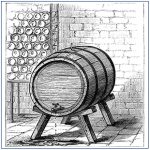Video Game Copyrights
Copyrights are extremely important for video game developers, because most of their work is copyrightable. Though what exactly can be protected by copyright in video game development? There are three limiting doctrines to what can be protected by copyright. The idea expression dichotomy, the merger doctrine, and Scène à faire, are three doctrines that limit what can be protected by copyright.
Video Game Law 101 with Zachary Strebeck
Zachary Strebeck is a California game lawyer who represents clients in the video game, tabletop game, and mobile app industries. In addition to his solo law practice, Zachary serves as Of Counsel to The McArthur Law Firm, where he counsels clients in business formation and fundraising issues, game development contracts, and the protection and enforcement of intellectual property.In this CLE class video Zachary Strebeck discusses Video Game Copyrights.
You can watch the complete Video Game Law CLE class here:
Video Game Law CLE
Idea versus expression, is something you absolutely have to know, if you’re doing anything copyright related. From the actual copyright law, “In no case does copyright protection for an original work of authorship extend to any idea, procedure, process, system, method of operation, concept, principle, or discovery, regardless of the form in which it was described, explained, illustrated, or embodied in such work.” 17U.S.C.102(b)
If you want to protect your ideas, your processes, and mechanics behind the game, those are things that would be protected by patents rather than copyrights. An example of an idea that is unpredictable in video game development, is your game mechanics. The rules and concepts behind the game are the things that are not protected by copyright. However, the expressions of those ideas are protected, thinks like your art assets, your character designs, the dialogue, and music of the game.
There comes a point when an author’s expression becomes indistinguishable from the idea that they seek to convey, such that the two merge. For example, the game Asteroids, the ship would spin around and shoot a bunch of asteroids, in that game there were only so many ways to express what they were trying to do. In that instance, the idea merged with the expression and is not protected.
Scène à faire relates to ideas that are common in a particular genre and they’re not able to be protected by copyright. Say you have a fantasy video game with dragons and knights, you’re not going to be able to protect those sort of stock characters and situations that are staples to that genre.
That’s how things were for video development until recently, there have been a few cases that have caused the courts to protect a bit more than just the expression of the concept. Tetris, one of the more popular games in recent years, was cloned for use on smartphones by Zio Interactive Inc. The games were very similar with the exception of slight difference in the art. They were sued by Tetris Holdings who owns the rights to Tetris in Texas. In this case, the courts found that Zio Interactive was infringing on Tetris Holding’s copyright, because it was an exact clone of the original Tetris game.
The court has some language in the verdict that gave rise to the idea that maybe there were protectable elements that were inside that game that were beyond just the artwork. The actual game and the look & feel of the game-play, and how the game mechanics interacted with the art could be protected. Later cases have carried on with this logic and subsequent cases have been filed to protect game mechanics.








